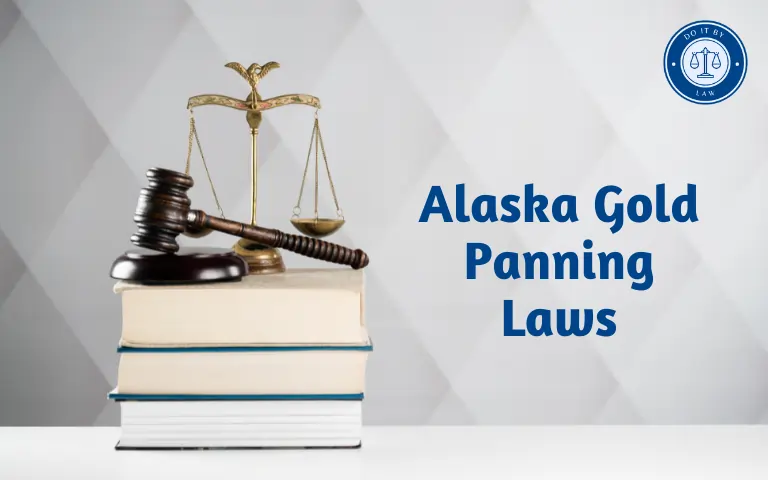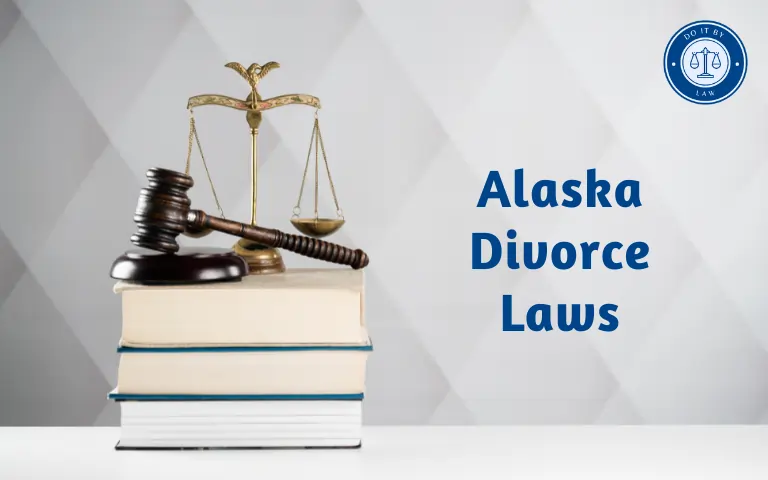Alaska Gold Panning Laws: What You Need To Know
Alaska welcomes recreational Alaska Gold Panning Laws across public Dig Areas or by staking claims through affordable permits. Understanding key rules helps visitors respectfully experience the last frontier’s ongoing prospecting heritage. This overview covers the basics for panning legally.
When Did Alaska Regulate Recreational Gold Panning and Why?
Alaska began regulating recreational gold panning isn’t possible. It’s more accurate to say it evolved over time, driven by various factors:
Historical Context:
- Gold Rush Era (1860s-1900s): Initially, there were minimal regulations as prospectors flocked to Alaska during the gold rushes. However, concerns about environmental damage and resource depletion arose by the early 20th century.
- Federal Land Management: As the federal government established agencies like the Bureau of Land Management (BLM) and the Forest Service, more comprehensive regulations emerged to manage public lands and resources.
Key Milestones:
- 1976 Federal Land Policy and Management Act (FLPMA): Established a framework for managing public lands, including regulations for recreational activities like panning.
- 1980 Alaska National Interest Lands Conservation Act (ANILCA): Significantly expanded protected areas in Alaska, imposing stricter regulations on mining and panning in specific locations.
- Ongoing developments: State and federal agencies continuously review and update regulations based on environmental assessments, resource protection needs, and public input.
Reasons for Regulation:
- Environmental Protection: Minimizing damage to waterways, fish and wildlife habitat, and fragile ecosystems through responsible panning practices.
- Resource Conservation: Ensuring sustainable gold panning doesn’t deplete resources for future generations.
- Public Safety: Addressing potential hazards like fast-moving water, wildlife encounters, and hypothermia for both panners and others using public lands.
- Responsible Use: Balancing recreational opportunities with fair access and preventing conflicts between users like claimholders and recreational panners.
Who Do Alaska Gold Panning Laws Apply To?
In Alaska, gold panning laws primarily apply to two groups of people:
1. Recreational panners: This includes anyone engaging in gold panning with basic tools like pans, shovels, and sluices for personal, non-commercial purposes.
2. Claimholders: This includes individuals or companies that have filed a mining claim with the Bureau of Land Management (BLM) to gain exclusive rights to mine a specific area for gold.
However, certain aspects of the laws also affect other potentially involved parties:
3. Landowners: Private landowners have the right to control activities on their property, including gold panning. So, their permission is always necessary before panning on private land.
4. Native Corporations: Certain areas in Alaska are owned by Alaska Native Corporations. Their regulations concerning gold panning may differ from public lands, so research beforehand.
5. Local communities: Respecting local customs and regulations is crucial. Some communities may have specific rules or restrictions on gold panning activities within their traditional territories.
Generally, the specific laws and regulations that apply to each group will depend on several factors:
- Where they are panning: Different rules apply to panning on public lands like BLM-managed areas, national forests, state parks, or private property.
- The extent of their activity: Recreational panning with basic tools has fewer restrictions compared to using mechanical equipment or suction dredges.
- Whether they hold a mining claim: Claimholders have specific rights and responsibilities according to their claim paperwork and federal mining regulations.
Remember, respecting these regulations and practicing responsible gold panning ensures a sustainable and enjoyable experience for everyone involved.
What Are Key Provisions in Alaska Gold Panning Laws?
Alaska gold panning laws are designed to balance recreational opportunities with resource conservation and responsible mining practices. Here are some key provisions to keep in mind:
For recreational panners:
- No permit required: Panning with hand tools only (pans, shovels, sluices) on public lands doesn’t require permits for recreational purposes.
- Location restrictions:
- Panning is allowed only in the active stream channel or unvegetated gravel bars. Avoid damaging streambanks or digging holes.
- Check for and respect seasonal restrictions related to fish spawning or other sensitive periods.
- Always respect claim boundaries: Claimholders have exclusive rights to their mining locations.
- Responsible practices:
- Minimize disturbance to the environment: Leave no trace, pack out all trash, and avoid harming vegetation.
- Be mindful of wildlife and respect local communities.
For claimholders:
- Filing a mining claim: This grants exclusive rights to a specific area for mineral exploration and extraction.
- Specific regulations apply: These include claim size limits, annual maintenance fees, environmental protection measures, and reporting requirements.
- Permits: Depending on the size and scope of operations, additional permits from state or federal agencies might be necessary.
Additional provisions:
- State parks: Gold panning may be prohibited or have specific regulations in certain state parks. Always check park rules before panning.
- Environmental protections: Laws aim to protect water quality, fish and wildlife habitat, and cultural resources. Be aware of specific restrictions or prohibited activities in certain areas.
- Safety: Be aware of potential hazards like fast-moving water, hypothermia, and wildlife encounters. Dress appropriately and take necessary precautions.
General environmental statutes also govern practicing leave-no-trace ethics. Prospectors build awareness by protecting wildlife, historic resources, and water quality while digging.
What are the Penalties for Violating Alaska Gold Panning Laws?
Penalties for violating Alaska gold panning laws depend on the severity of the offense and which agency enforces it. Here’s a breakdown:
Recreational Panning:
- Minor violations: Exceeding daily gold limits, panning in restricted areas, or using prohibited equipment could result in warnings, fines (starting around $100), or confiscation of equipment.
- Major violations: Damaging sensitive habitats, trespassing on private property, or disturbing cultural resources could lead to higher fines, citations, or even criminal charges depending on the severity.
Claimholders:
- Failing to maintain claim: Not meeting annual maintenance requirements or filing inaccurate reports can result in fines and potentially claim forfeiture.
- Environmental violations: Exceeding permitted activity, polluting waterways, or harming wildlife can bring hefty fines, claim suspension, or even criminal prosecution.
Enforcement Agencies:
- Bureau of Land Management (BLM): Primarily enforces regulations on federal public lands.
- Alaska Department of Natural Resources (DNR): Oversees state-owned lands and waterways.
- U.S. Forest Service: Manages regulations within national forests.
- Alaska Department of Fish and Game: Enforces rules related to fish and wildlife protection.
Charges also apply for vandalism destroying claim posts or markers. And market value penalties can hit unlawful ore extractions above permitted recreational volumes.
Have There Been Recent Changes to Alaska Gold Panning Laws?
Not since 2016 when House Bill 137 lifted a prior ban on suction dredging to allow smaller 4” hand nozzles. Dredging awaits new general permit terms balancing recreation and salmon habitat protections.
Other recent proposals included:
- Expanding designated panning areas near growing communities to sustain tourism
- Letting establishments like hotels hold claims benefiting multiple guest prospectors
- Clarifying staking parameters and enforcement for claim boundary disputes
But lawmakers currently focus on mining industry taxation debates more than hobbyist revisions.
What Key Controversies Surround Alaska Gold Panning Laws?
Alaska gold panning laws, like many regulations, are not without their controversies. Here are some key areas of debate:
Balance between recreation and resource protection:
- Recreational panners: Some feel existing regulations are overly restrictive, limiting access and enjoyment for casual hobbyists. They argue that responsible panning with hand tools poses minimal environmental impact.
- Conservationists: Concerns exist about potential damage to waterways, fish habitat, and sensitive ecosystems, even from seemingly small-scale panning activities. They advocate for stricter regulations to ensure sustainability.
Claimholder rights vs. public access:
- Claimholders: They argue for clear protections of their claims and exclusive rights to mine within their boundaries. Concerns exist about recreational panning encroaching on claims and hindering legitimate mining operations.
- Public access advocates: They emphasize the importance of public access to public lands for recreational activities like panning. They believe regulations should ensure both claimholder rights and responsible public access.
Subsistence vs. commercial uses:
- Subsistence miners: Some Alaska residents rely on small-scale gold panning for personal or community use. They seek regulations that support sustainable subsistence practices.
- Commercial miners: Larger-scale commercial operations argue for regulations that allow efficient and profitable mining while complying with environmental standards.
Enforcement challenges:
- Limited resources: Concerns exist about the ability of agencies to effectively monitor vast areas and enforce regulations, especially regarding remote locations.
- Varying interpretations: Differing interpretations of regulations by users and enforcement personnel can lead to confusion and potential conflicts.
Additionally:
- Historical legacy: Some view regulations as an ongoing restriction on historical mining traditions and economic opportunities, despite conservation justifications.
- Economic impact: Regulations can impact local economies dependent on tourism and recreational activities like gold panning. Balancing economic benefits with environmental protection is a constant discussion.
Resources for further information:
- Alaska Miners Association: https://www.alaskaminers.org/
- Alaska Conservation Alliance: https://www.alaskaconservation.org/
- Alaska Federation of Natives: https://www.afn.org/
Still, many lawmakers consider regulated panning a heritage right and economic contributor during proper seasons deserving support.
In Summary
Alaska welcomes recreational gold panning under placer claim staking or public Dig Area rules balancing tourism benefits and sustainability. Observing core laws prevents damage while preserving rich prospecting traditions.







